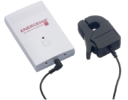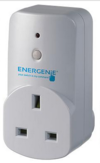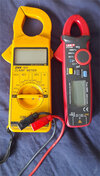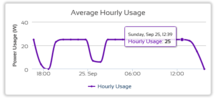which is the gas consumption
I wish I could monitor oil consumption, I clearly realise when the boiler is running it is using oil, and since it does not modulate that can be worked out by the run time, which my Nest Gen 3 thermostat records for me.
However in mothers house with gas, the boiler modulates, and there was nothing on the boiler to say running at 6 kW or 26 kW so simple time running does not help, you need a minute by minute read out showing the gas being used, one they would not fit a gas smart meter unless I also had an electric one fitted, and two it seems even when fitted it does not show minute by minute use, so rather pointless.
Smart meter or no smart meter we all know the warmer the home the more it costs, and the more rooms heated the more it costs, and to keep costs down we only heat rooms in use, and only just enough, what would help is to know how much it costs to heat each room, so I can make a informed decision, should I use the dinning room, should I even use the living room or stay in my bedroom. If I raise the living room temperature by 2°C how much will it cost me. Same goes for all other rooms in the home, I am sure if I don't use the upper two floors in my home in the winter it will save me money, I could limit myself to live in just 4 rooms of the house, but no Smart meter is going to tell me how much that will save, I could heat each room in turn with an electric heater, and work out at a set outside temperature what each room needs to heat it, and I could use a plug in energy monitor to work that out, but a Smart meter is simply to general to be of any use.
Have you ever tried to work out what it costs to wash cloths? I have, and gave up. Each time I put on the washer it would weigh the load and adjust the wash cycle, so using same program 10 times with a full load of washing will give 10 different results. So working out if you will save anything by using a different program is impossible.
Same with dish washer, shorter program does not always mean cheaper, if any items need washing twice, then you have used more water and more detergent as well as more power, we just have to trust the designers got it right, and follow the instructions.
But if even with one item with a energy meter I can't work out which is best cycle, what chance is there with many items running together, answer is simple, non, for the consumer the Smart meter is a complete waste. It may help the supplier or billing agent, but not the user.







